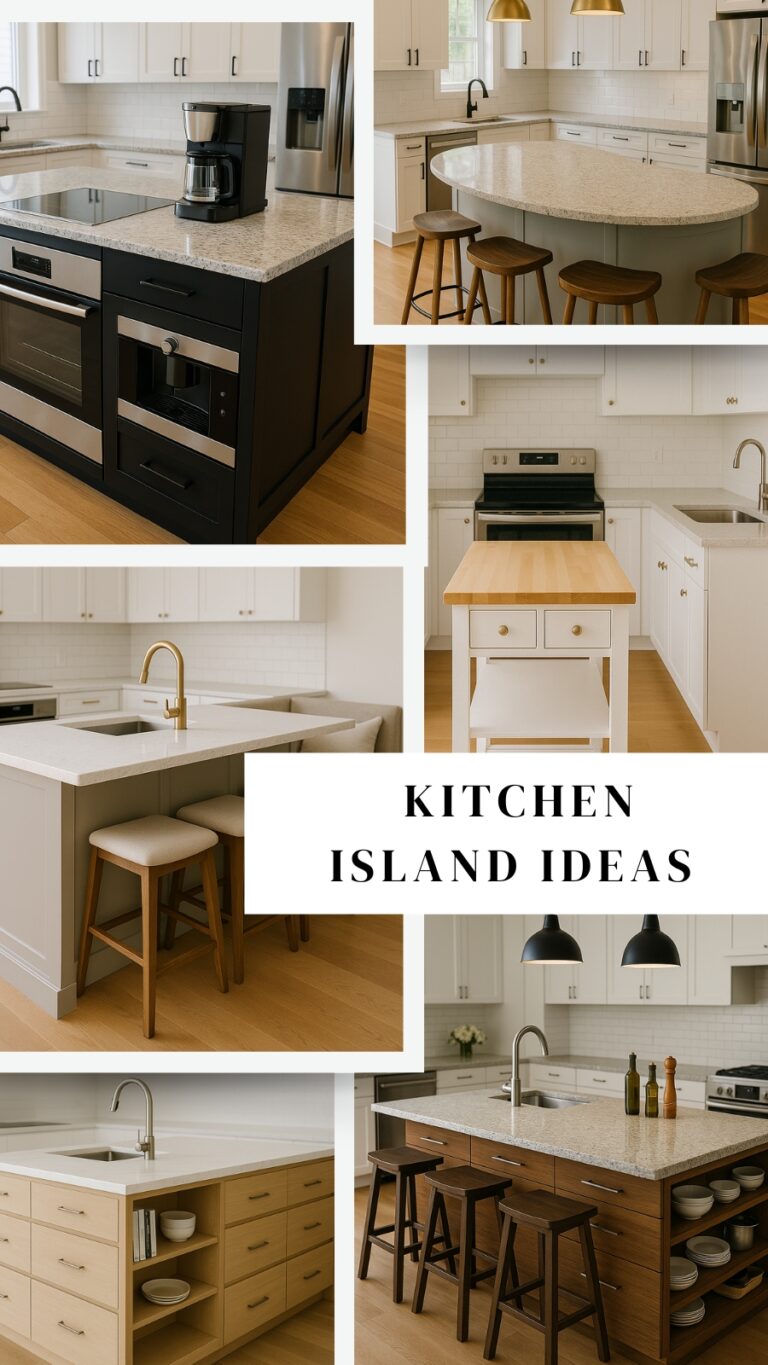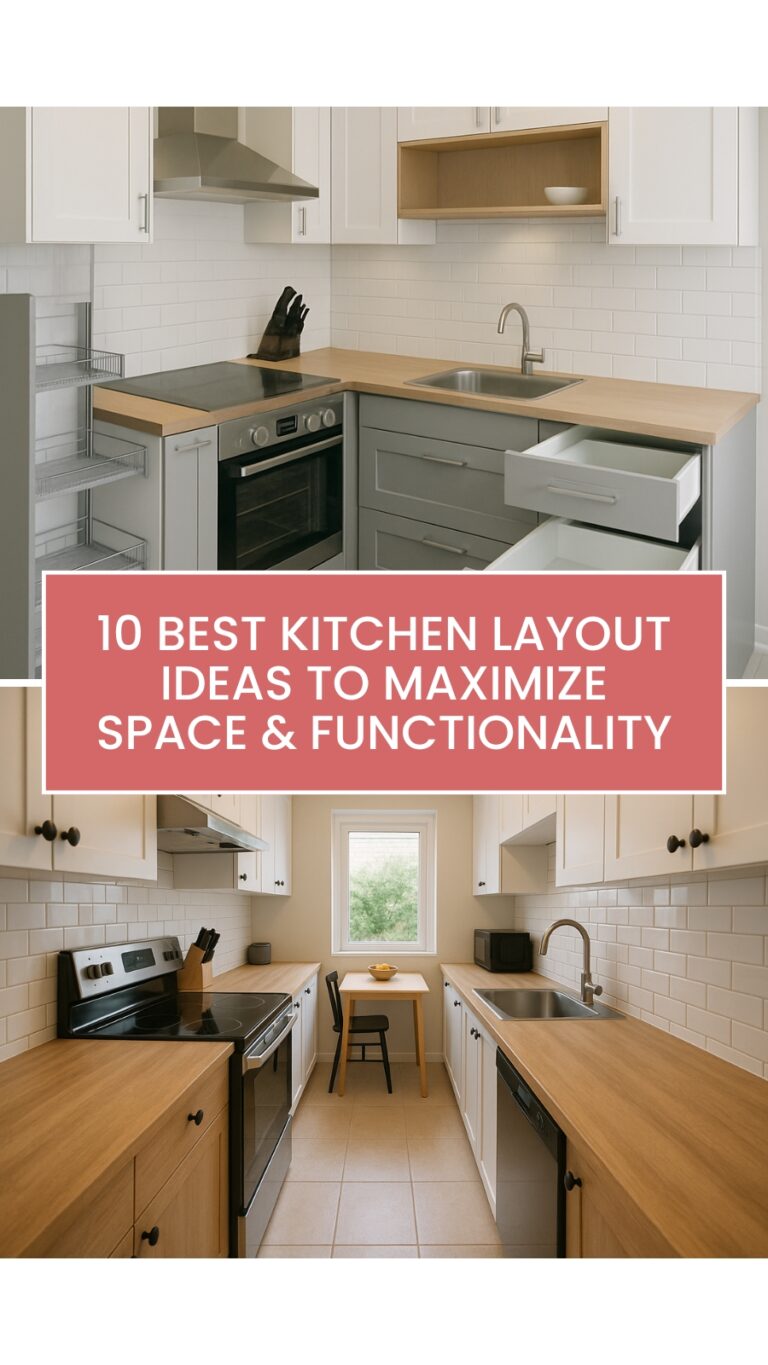AI Kitchen Design: How Technology is Transforming Your Cooking Space

Artificial intelligence is revolutionizing the way we plan, design, and optimize kitchens. From automated layout suggestions to personalized décor recommendations, AI kitchen design combines technology with creativity, making it easier than ever to create a functional and stylish kitchen. These ideas show how AI can help homeowners design kitchens that are modern, efficient, and visually stunning.
1. Personalized Layout Suggestions

AI-powered design tools can analyze your kitchen’s dimensions, workflow, and daily usage patterns to create personalized layout suggestions. They consider counter space, appliance placement, storage needs, and traffic flow to optimize efficiency and aesthetics. For example, AI can suggest the best triangle layout between the sink, stove, and refrigerator, or recommend additional prep surfaces in high-use areas. This ensures every inch of space is utilized thoughtfully while maintaining comfort and convenience.
2. Virtual 3D Modeling

With AI, you can generate highly realistic 3D models of your kitchen before starting renovations. This allows you to test different layouts, cabinet styles, countertop materials, and color schemes virtually. You can see how light interacts with surfaces at different times of day, assess visual balance, and experiment with design choices without committing to costly changes. 3D modeling helps homeowners make informed decisions and brings design concepts to life.
3. Smart Appliance Integration

AI design platforms can recommend the most suitable appliances for your kitchen style and needs. From smart ovens, induction cooktops, and refrigerators to automated coffee machines and dishwashers, AI ensures appliances are placed for convenience, efficiency, and aesthetic harmony. Integration with smart home systems also allows seamless control of lighting, ventilation, and temperature, creating a highly functional and connected kitchen environment.
4. Color Palette Optimization

Choosing the perfect colors can be challenging, but AI can analyze your kitchen space, lighting, and cabinetry to suggest complementary color palettes. It considers trends, personal preferences, and spatial dimensions to recommend shades that enhance brightness, warmth, and mood. Whether you prefer bold contrasts or subtle, calming hues, AI ensures your color choices are cohesive, stylish, and tailored to your space.
5. Space-Saving Solutions

AI tools excel at identifying hidden storage opportunities and multifunctional designs. Pull-out pantries, corner drawers, under-cabinet storage, and multi-tiered islands are suggested based on your needs. For small kitchens, AI can create layouts that maximize usable surfaces without crowding the space, helping you maintain organization while adding style. This ensures kitchens are clutter-free and functional, even in limited areas.
6. Trend Analysis and Inspiration

AI can scan social media, design websites, and market data to identify emerging kitchen trends. It then recommends elements like cabinet finishes, backsplash patterns, countertop materials, and lighting styles that align with your preferences and popular designs. This allows homeowners to create kitchens that feel contemporary, unique, and highly personalized, without relying solely on guesswork or outdated ideas.
7. Sustainable and Eco-Friendly Recommendations

Sustainability is a growing priority, and AI can suggest eco-conscious materials, appliances, and layouts. From recycled countertops and low-VOC paints to energy-efficient lighting and water-saving fixtures, AI helps homeowners create environmentally responsible kitchens. These recommendations combine style with sustainability, proving that modern kitchens can be beautiful, functional, and green.
8. Lighting Optimization

Proper lighting enhances both function and ambiance, and AI can simulate natural and artificial light throughout the kitchen. It analyzes window placement, fixture types, and material reflectivity to suggest lighting schemes that brighten workspaces and create inviting moods. Layered lighting recommendations ensure task areas are well-lit, while accent lights highlight design features, creating a balanced and visually appealing kitchen environment.
9. Workflow and Ergonomics

AI kitchen design prioritizes ergonomic layouts tailored to your habits. It analyzes cooking routines, frequency of use, and appliance placement to recommend efficient workflows. Proper ergonomics reduce unnecessary movement, enhance safety, and make the kitchen more comfortable. Whether it’s optimal countertop heights, ideal appliance distances, or storage placement, AI ensures your kitchen works for you, not the other way around.
10. Augmented Reality for Real-Time Visualization

AI-powered augmented reality (AR) apps let you see different kitchen designs in your actual space. You can experiment with cabinet styles, countertop finishes, color schemes, lighting, and décor in real-time. AR helps you make precise decisions on scale, color, and layout, allowing you to visualize the finished kitchen before any renovations begin. This interactive approach minimizes errors and boosts confidence in your design choices.
Final Thoughts
AI kitchen design is transforming the way homeowners plan and execute kitchen renovations. By combining virtual modeling, smart appliance placement, ergonomic optimization, and trend analysis, AI ensures kitchens are functional, stylish, and tailored to individual needs. Embracing AI in kitchen design allows you to create a space that balances modern technology with aesthetic appeal, making your kitchen a futuristic, efficient, and visually striking hub of your home.










